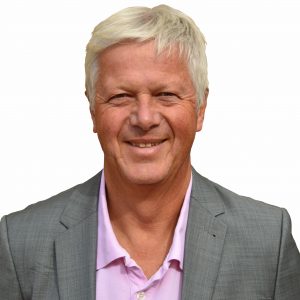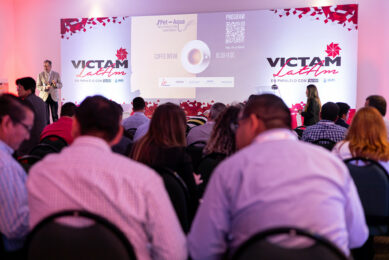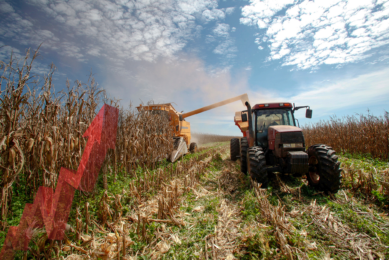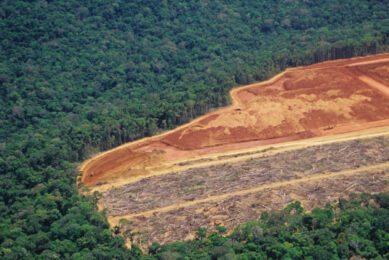Aftaa on raw materials: How to manoeuvre in times of uncertainty?
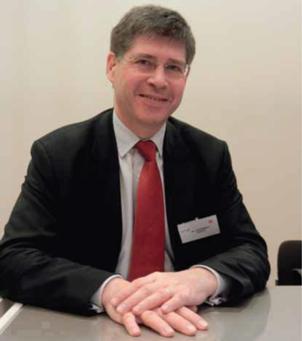
The 27th Aftaa* conference on raw materials took place in Paris on 30 November and 1 December 2011. With a more proactive organisation consisting of, for the first time, practical workshops for the delegates, this annual event is always a good opportunity to get a better understanding of the main raw materials markets.
The first presentation on 30 November was made by François Luguenot, head of market analysis at leading French farming cooperative InVivo, and was focused on corn and grain. According to Luguenot markets don’t exist anymore, only the operators (traders) exist. “Finance and emotion are becoming omnipresent and the politics even more intrusive than last year,” he said. According to his analysis world grain stocks will drop again in 2012, a trend which has been observed since the mid-1980s. However, this stock analysis must be done cautiously as the situation varies according to the segments (stability for wheat, drop for maize). In his analysis on the world soft wheat production, Luguenot estimates that there is no disaster foreseen but merely qualitative concerns (lack of proteins in Argentina, fungi in Australia).
Regarding the grain use by the European feed industry, barley is less used and replaced by wheat and maize. “The EU-27 is expected to export less soft wheat in the coming months,” he said. World stocks of maize are dropping for the fourth consecutive year, and the market is “bipolar”, between a catastrophic situation in the USA and a huge harvest and yields explosion in France, Romania and Ukraine.
Chinese appetite for soy
In the second presentation, Christophe Delafon from grain trader Bunge discussed the South American production of soy and the Chinese appetite for this raw material. In ten years time, Chinese soybean cake imports have multiplied by six to 57 million tonnes in 2011/12, and the trend is the same for the soybean seeds crush which will reach 61 million tonnes in 2011/12. “China is the first world soybean seeds processor,” said Delafon who added that the share of China in the world soybean imports increased from 18% in 2001 to 60% in 2011.
In the second presentation, Christophe Delafon from grain trader Bunge discussed the South American production of soy and the Chinese appetite for this raw material. In ten years time, Chinese soybean cake imports have multiplied by six to 57 million tonnes in 2011/12, and the trend is the same for the soybean seeds crush which will reach 61 million tonnes in 2011/12. “China is the first world soybean seeds processor,” said Delafon who added that the share of China in the world soybean imports increased from 18% in 2001 to 60% in 2011.
One of the reasons for this Chinese appetite is the rationalisation of compound feed use by pig producers, with pork meat being a top choice for Chinese consumers. According to the China Feed Industry Association, pig compound feed use has increased by 6.5% per year from 2004 to 2009. In the meantime, Chinese pig production increased by 2.4% per year, mostly in large scale units. If China is the leading world user of soybean cake (+9% per year from 2009 to 2012), a high potential also exists for this raw material in South East Asia (+4%/y). The US soybean exports are expected this year to be below the last two campaigns (37 million tonnes should be possible), and the exports from Brazil and Argentina are expected to show a sharp increase. World soybean production should grow from 259 to 269 million tonnes from 2011/12 to 2012/13, allowing the stocks to be reconstituted. The US Department of Agriculture forecasts for the coming 20 years conclude an increase of soybean exchanges, with Brazil and USA still ahead in exports.
More sunflower seed, less rapeseed
In the first presentation of the second day, Thibaut Dumand from French leader in oilseed crushing and vegetable oil refining Saipolm, showed interest in the consequences of the abundance of sunflower seeds and of the shortage of rape seeds. Soy with 60% leads the world production of oilseeds (262.1 million tonnes in 2010/11), followed by rape (59 million tonnes, or 13% of the world oilseeds production) and sunflower (7% of the world oilseeds production). “Since 2009, European rape seed production has been dropping, due to the drop of both surfaces and yields,” explained Dumand, and added that Australia has become the main source for European imports (1,8 million tonnes) ahead of Ukraine. In Europe, the leading rape seed producers are still France and Germany, the last one having seen its harvest sharply drop in 2011 due to winter losses (see Table 3). France, as the UK, remains a net rape exporting nation and following 2012/2013 forecasts, expects an increase of surface area (+6%) and production growth from 5.2 to 5.4 million tonnes.
Regarding sunflower, the 2011 French harvest is better than in 2010 (1.91 million tonnes instead of 1.64 million tonnes), the big surprise coming from Russia, with production jumping at the same time from 5.6 to more than 9 million tonnes. This volume is slightly superior to that of Ukraine (8.7 million tonnes). Both countries, Russia and Ukraine, remain big crushers of sunflower seeds with 8.2 million tonnes crushed seeds in 2011 for each country. “Ukraine, as Russia, has higher crushing capacities, explaining a low availability of seeds for export,” said Dumans.
The European sunflower seeds saw an increase of production from 2010 to 2011 (7.18 to 8.07 million tonnes), with more crushed sunflower seeds than rape seeds at a European level. “Sunflower seed is cheaper than rape seed and there is a permanent arbitration between them for the crushing industry,” Dumans said. In October 2011, the difference of price between rape cake and sunflower cake was €57 in favour of the latter, explaining a higher use of sunflower cake in the formulas. France remains overdrawn in rape oil cake and the 510,500 tonnes imported in 2010/11 mainly came from UK and Germany (each country representing 36.2% of the total imports), and then from Belgium (24.4% of the total) and the Netherlands (6.8% of the total).
Analytic variability – raw materials
In the next presentation Sébastien Douet from farm nutritional service company Techna focused on the occurrence of analytic variability and the effect of raw material quality on the cost of the formulas. “The number of nutrients for each raw material keeps increasing and today we already count 250 to 300 nutrients per raw material,” said Douet, and added that formulation is “an arbitration between various contradictory constraints with the target of economic optimisation”. To achieve it, material management (Techna owns a matrix of 20,000 raw materials) and updating of these raw materials is a first step. “The qualities involved have a significant technical and economic impact,” said Douet.
In the next presentation Sébastien Douet from farm nutritional service company Techna focused on the occurrence of analytic variability and the effect of raw material quality on the cost of the formulas. “The number of nutrients for each raw material keeps increasing and today we already count 250 to 300 nutrients per raw material,” said Douet, and added that formulation is “an arbitration between various contradictory constraints with the target of economic optimisation”. To achieve it, material management (Techna owns a matrix of 20,000 raw materials) and updating of these raw materials is a first step. “The qualities involved have a significant technical and economic impact,” said Douet.
More moisture for instance means less energy, a point more protein on soy (passing from 45.5 to 46.5% of proteins) means 3 euros less per tonne for a corrective feed at 42%. Also, to pass from 3% to 6.5% of raw fibre on a soybean cake means a drop of 50 to 150 kcal depending on the species, and an additional cost of 1 to 3 euros/t. The choice of the method of analysis is also of importance. “When a new soybean cake arrives at my plant, how many analyses should I do to be sure of its value? The answer depends on the analytical uncertainty,” said Douet. “With an analytical method having an uncertainty of 0.5 point, you need six samples to be sure your soybean is at 46% (+/- 0.2) protein. With an analytical method having an uncertainty of 1 point, you need 24 samples to be sure your soybean is OK.
*Association Française des Techniciens de l’Alimentation et des Productions Animales = French Association of Food Technicians and Animal Production
Navigating in uncertainty Frédéric Lorenzini, director of research for supplier of investments research company Morningstar, brought an external analysis and macroeconomic perspective to both days organised by Aftaa. Under the title “How to navigate in uncertainty”, his speech first focused on the financial crisis which has shaken a lot of European countries. “This financial crisis is in fact the outcome of a very long cycle which started in the 70’s with the first oil crisis,” said Lorenzini. “We are summoned to solve this problem in three months which exists or dates back 30 years,” he said. He also referred to the acceleration of uncertainties since last summer. “Nobody is covered and the state is not a safe investment anymore,” he said, and concluded: “The debt scenario is still alive and we are on the eve of a painful period of adaptation and recession for which the French people are not ready. Emerging countries have been innovating and creating added value to their production for decades and we should call them now “frontier countries”. A good point of this lucid analysis: this period of decline is fertile for the emergence of new ideas. |


